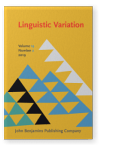Vol. 19:2 (2019) ► pp.280–351
Quantifier particle environments
I examine the set of environments in which KA-type quantifier particles appear crosslinguistically. These environments include interrogatives, disjunctions, indefinites, all of which arguably involve elements with Hamblin-type ‘alternative’ semantic values. I show that if KA-particles are assigned a uniform denotation as variables over choice functions we can account for their appearance in what otherwise appears to be a set of heterogeneous environments. Crosslinguistic and diachronic variation in the distribution of Q-particles – including, in some cases, the appearance of multiple morphologically-distinct Q-particles in different contexts – can be handled largely in terms of differing formal morphosyntactic features and/or pragmatic components of specific KA-particles. This study focuses on tracking the evolution of KA-type particles in the history of Sinhala, with comparison to other languages of the Indian subcontinent (including Malayalam and Tamil) as well as to Japanese, Tlingit, and English.
Article outline
- 1.Overview
- 2.Language overview – examples
- 2.1Sinhala
- 2.1.1Modern colloquial Sinhala
- 2.1.2Modern literary Sinhala
- 2.1.3Classical Sinhala
- 2.1.4Old Sinhala
- 2.1.5Summary of the evolution of Sinhala particles da & hō
- 2.2Dravidian
- 2.2.1Malayalam
- 2.2.2Modern Tamil
- 2.2.3Old Tamil
- 2.2.4Other remarks
- 2.3Japanese
- 2.4Tlingit
- 2.5English
- 2.6Summary
- 2.1Sinhala
- 3.KA in interrogatives
- 3.1A Hamblin semantics of wh-words
- 3.2Choice-functions & the denotation of Q-particles
- 4.KA in disjunctions
- 4.1Evidence for a category J(unction)
- 5.Syntactic analysis
- 5.1Modern colloquial Sinhala
- 5.2Modern literary Sinhala
- 5.3Early Sinhala
- 5.4Old Malayalam
- 5.5Modern Malayalam
- 5.6Tlingit
- 5.7Japanese
- 6.Morphosyntactic & semantic/pragmatic variation crosslinguistically
- 7.Comparison with other accounts
- 8.Conclusion
- Acknowledgements
- Notes
-
References
